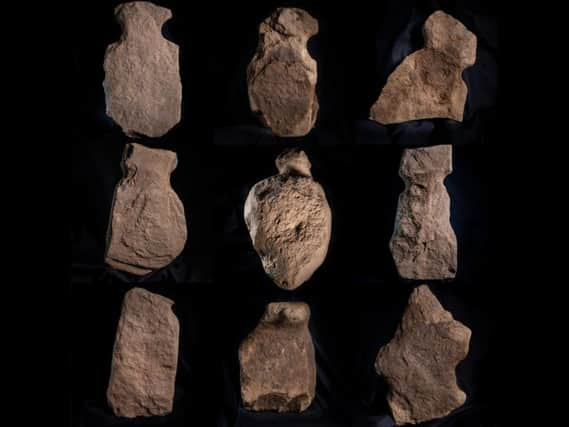'Amazing' set of Bronze Age figurines found in Orkney at site of new power station


The half- metre stone objects were found during exploratory excavations at the proposed Finstown site.
Archaeologists dug through 60 centimetres of midden deposits to reach the artefacts.
Advertisement
Hide AdAdvertisement
Hide AdA team from Orkney Research Centre for Archaeology (ORCA) said some of the objects looked like representations of the human form.
The stones were found scattered around a hearth found within the remains of an 'enigmatic structure' at the Finstown site with the purpose of the building not yet understood.
"It is very rare to find representations of people in prehistoric Orkney and when found, they are usually individual or in very small groups. If they are figurines, to find nine figures within one structure is very exciting and together with the archaeology found at this site has the potential to add to our understanding of Orcadian society in prehistory.”
Dating the necked stones firmly will require further work given that similar objects have been found on Iron Age sites in Orkney.
Archaeologists believe the Finstown finds possibly date to around the Late Neolithic or Early Bronze Age, roughly 2000BC.
Identifying the purpose of these stones, and if they are figurines, will also require further investigation with a close study for abrasion, wear and any other marks on these anthropomorphic objects.
The ORCA team also found clear signs of people working the land at Finstown some 4,000 years ago.
In one of the trenches, long marks were found cut into the clay subsoil, which were made by ards, or stone ploughshares, which would suggest prehistoric farming in Orkney.
These prehistoric ploughs were constructed of wood with a stone shaped into a rough point placed into the wood to plough the soil ready for planting.
